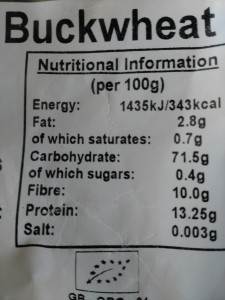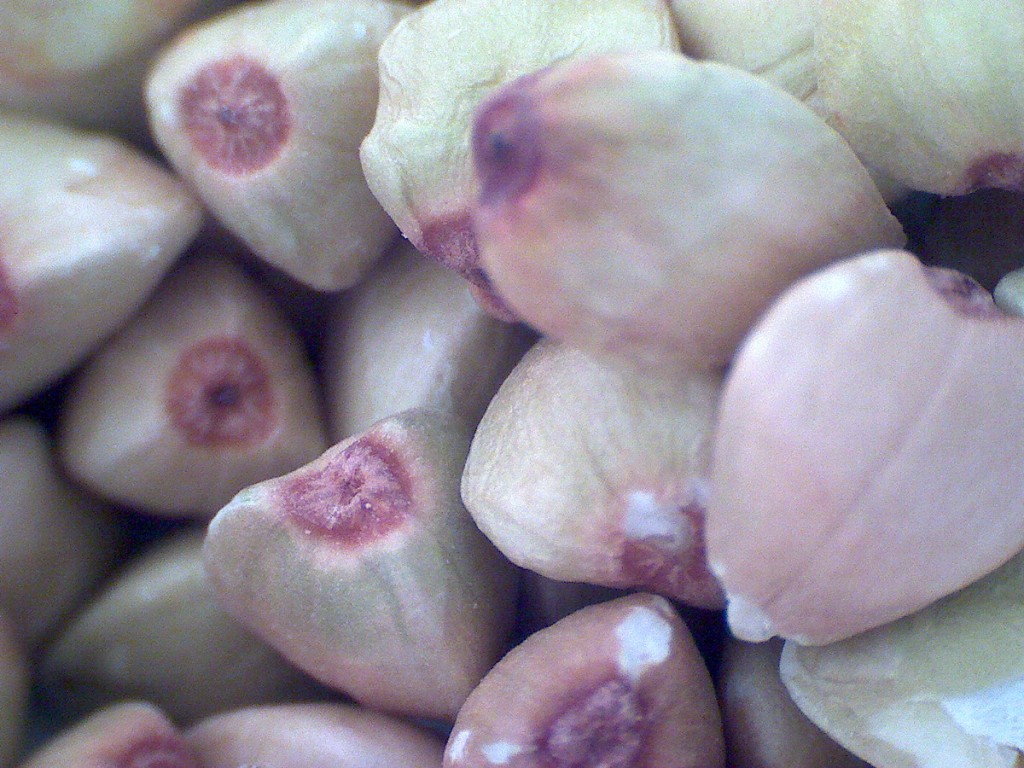What is Buckwheat?
Buckwheat despite the name is actually nothing to do with wheat. Buckwheat is a seed, however it is often called a pseudograin as it can be used in place of grains. The plant that produces the buckwheat seed is related to rhubarb and sorrel. It’s cheap (price as of April 2016 is about £3 per kilo for organic), quick and easy to prepare with a mild nutty taste that is very versatile. Buckwheat can be used as a whole seed or is easy to grind down to a flour for baking and other recipes. It’s a staple in my house to make quick, filling and nutritional meals.
 Benefits of Buckwheat
Benefits of Buckwheat
Buckwheat is high in protein with 13% and contains B vitamins, magnesium, iron, manganese and copper. Buckwheat is suitable for people with celiac disease and anyone that has gluten sensitivity. Buckwheat being a seed is much easier for your body to digest and avoids some of the problems with grains such as bloating.
How to use Buckwheat
- Sprouted buckwheat; soak in water for 20 minutes, drain in a sieve. Then rinse every 12 hours. Ideally do this for 2-3 days until tails grow as long as the seed. However in real life this isn’t always possible so just soak and then leave to sprout for at least 30 minutes. Don’t allow the tails to grow longer than the seed, as green shoots can be poisonous. If they have reached this size and you aren’t ready to use you can keep in the fridge for 3 or so days (rinsing daily). However be aware they do mold easily.
- Buckwheat pancakes; grind buckwheat/use buckwheat flour and mix with water to make a mixture that is quite runny. Pour into a frying pan and cook just like a normal pancake.
- Kasha roasted buckwheat; buckwheat is called kasha when it has been roasted. You can buy this pre-done however I prefer to roast my own – as it is better freshly roasted and its easier just having one type of buckwheat. Dry roast it on a low heat for 1-2 mins until it starts to turn dark brown. Toss frequently and don’t leave it’s sight as it can quickly burn. Store in an airtight container if not using immediately. It is nice sprinkled on anything such as salads or risotto to add some crunch and a nutty earthy taste.
- Buckwheat porridge; heat on a low heat with water for 30 minutes and use in place of oats.
- Buckwheat risotto; buckwheat will create a thick creamy sauce so its ideal for a rice replacement. It takes about 30-40 mins on a low heat to cook. Simply cook with some vegetables of your choice. I make a vegan buckwheat risotto with peas, garlic, onion, mushrooms and seasoned with salt, pepper and nutritional yeast in place of cheese.
Products with buckwheat
You can buy many products such as pasta, noodles, crackers and bread that consist mainly of buckwheat and are naturally gluten free. These are often nutritionally superior to their grain containing counterparts and cook just as quickly. Buckwheat noodles are one of my favorite foods and I love the springy flavor sponges they become. You do have to take more care when cooking buckwheat foods such as noodles as they can easily loose their shape and stick together as they don’t contain gluten to glue them together. What I do is cook and stir frequently, then as soon as they are cooked I drain and toss under cold water to stop them cooking and sticking together. It may sound difficult but its easy once you get the hang.


‘Kasha’ goes from Polish word ‘kasza’ and means grinded grains in general (I suppose groans). It concerns not only roasted buckwheat 🙂
Anyway, great article!